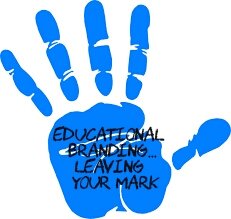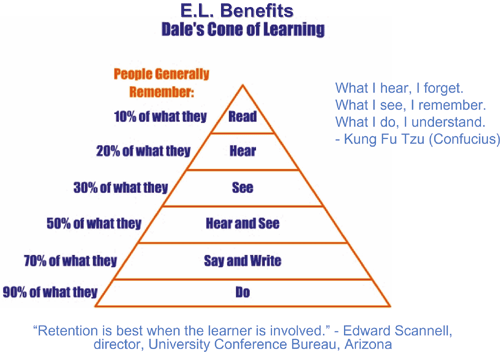You ever had one of those days where you just thought it went exceptionally well? Everything was right with the world. Friday was one of those days. Not because I taught an amazing lesson or had every student pass a test. As a matter of fact, I didn't teach one lesson. I didn't give a test or assign homework. Friday was a day of impact. Our Academy EDU students were fortunate enough to have two amazing individuals pour into their lives. Actually, it was more like drinking from a fire hose. As educators we can get consumed with content. We feel there is a need to justify how every activity in class ties into the standards. I personally see this as a secondary action in teaching. Our primary action is to get students passionately connected to a purpose. If we do that, they become more engaged and intrinsically motivated when we hit the content.
This was no ordinary Friday. Our students and staff were in for a treat. First, we had a visiting school touring the ILC. They joined our class for the Skype session. You see, this is the culture of the ILC. Open to the unplanned and open to being a bit #UNCOMFORTABLE. We do what's best for kids even if that means involving staff from outside your own space to impact kids that aren't even tied to your school. Second, our guest speakers for the day were PHENOMENAL! Scott Grant introduced Coyte Cooper to discuss his passion about leaving your mark on the world. Coyte is high energy. He is all about making a difference and leaving a lasting impression. During his Skype session he ended with what he calls his Top 10 tips to making a difference:
- Pursue your Passion
- Be Intentional About What You Want Out of Life
- Invest in Yourself Every Single Day'
- Value Happiness Over Success
- Be Kind to People: Lift Them Up and Not Tear Them Down
- Set a Remarkable Standard of Excellence
- Embrace Being Uncomfortable
- Learn to Fail Forward Quickly and Repetition
- Love Your Life
- Do Your Part to Make the World a Better Place
Checkout the Doodle Notes from one of our students:
Here are some reflective thoughts from my students:
- I think I was most shocked by the idea that I spend 80% of my day thinking negative thoughts. I really hate that idea (oh no negative!) so I'm going to try really hard to ONLY THINK POSITIVE!! I think it's awesome that he stressed relationships so much... I love building relationships so much.
- "Look forward to the opportunity to learn." I can't remember if he was talking about school, but I think it's very relevant to life too- look forward to learning new things about other people, ourselves, and the world.
- The two points that were interesting to me were the one 'Value happiness over success' and 'set a remarkable standard for excellence'
 Prof. Scott Grant talked to us about the importance of branding. Not from a marketing standpoint but from an Educational perspective. Since EDU students are the future of education it is important to understand the power of your voice. In today's society our voice is extended from us and into our social media feeds. Grant asked our students a simple question and I am going to ask the same of you....if you looked at your last 20 posts on social media what three words would people use to describe you? Amazon's CEO, Jeff Bezos, states, "Your brand is what people say about you when you are not in the room." What are people saying about you because of your digital footprint? He used a simple Hand analogy to drive home the point. If you were to trace your hand on a piece of paper your palm would represent your "Brand" and the tips of your fingers your social media accounts. The stems of your fingers represent the "how" you communicate your true "Brand" to others. How well are you making an impression on others? Educational Branding is something we as educators should be aware of. What are students saying when they leave your classroom? Are they eager to return or filled with dread? When someone leaves your building what are they saying about the culture of your school? Hopefully, they want to return and leave with an impression that it was more than just a building teaching content.
Prof. Scott Grant talked to us about the importance of branding. Not from a marketing standpoint but from an Educational perspective. Since EDU students are the future of education it is important to understand the power of your voice. In today's society our voice is extended from us and into our social media feeds. Grant asked our students a simple question and I am going to ask the same of you....if you looked at your last 20 posts on social media what three words would people use to describe you? Amazon's CEO, Jeff Bezos, states, "Your brand is what people say about you when you are not in the room." What are people saying about you because of your digital footprint? He used a simple Hand analogy to drive home the point. If you were to trace your hand on a piece of paper your palm would represent your "Brand" and the tips of your fingers your social media accounts. The stems of your fingers represent the "how" you communicate your true "Brand" to others. How well are you making an impression on others? Educational Branding is something we as educators should be aware of. What are students saying when they leave your classroom? Are they eager to return or filled with dread? When someone leaves your building what are they saying about the culture of your school? Hopefully, they want to return and leave with an impression that it was more than just a building teaching content.
I leave you with one final image because most importantly, I believe that relationships matter. If we do our best to impact others and make each moment count than we truly can make a difference in the world!
#HappyToHelp
John

























